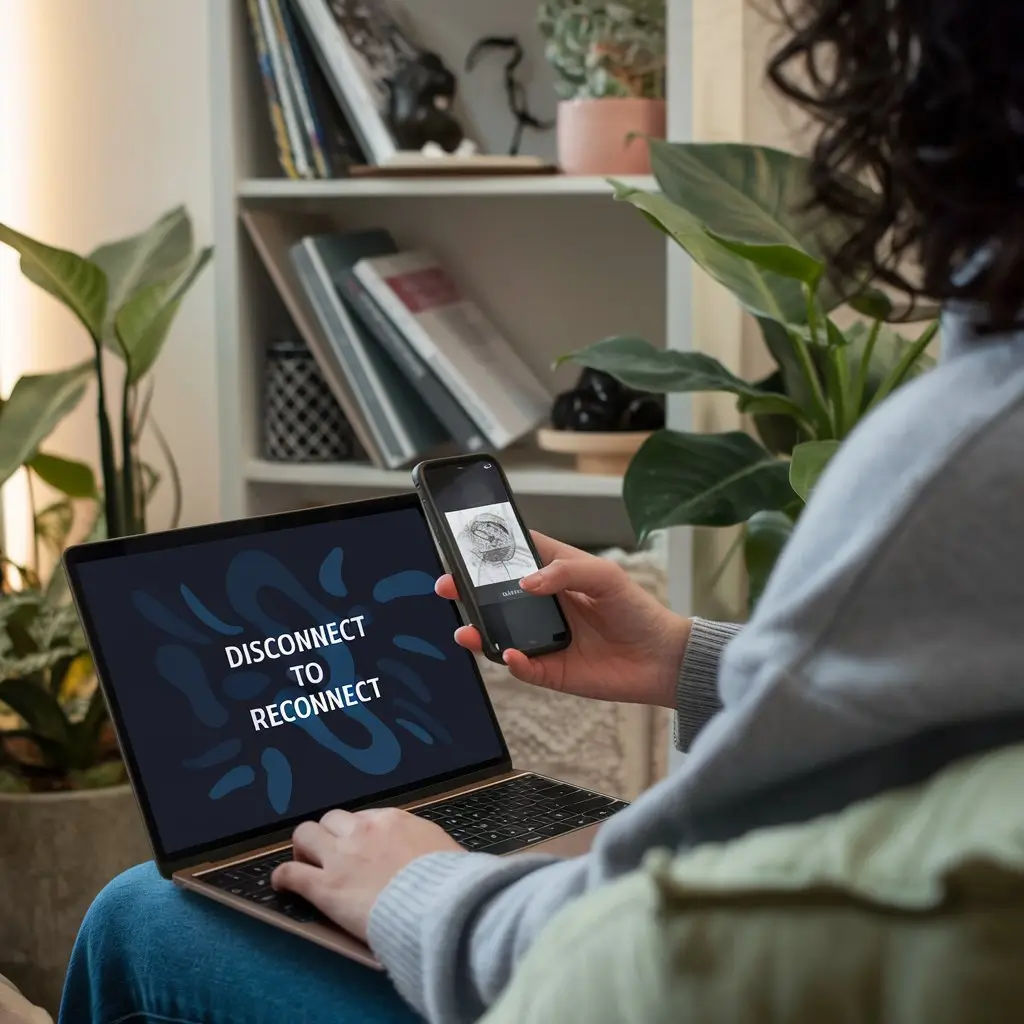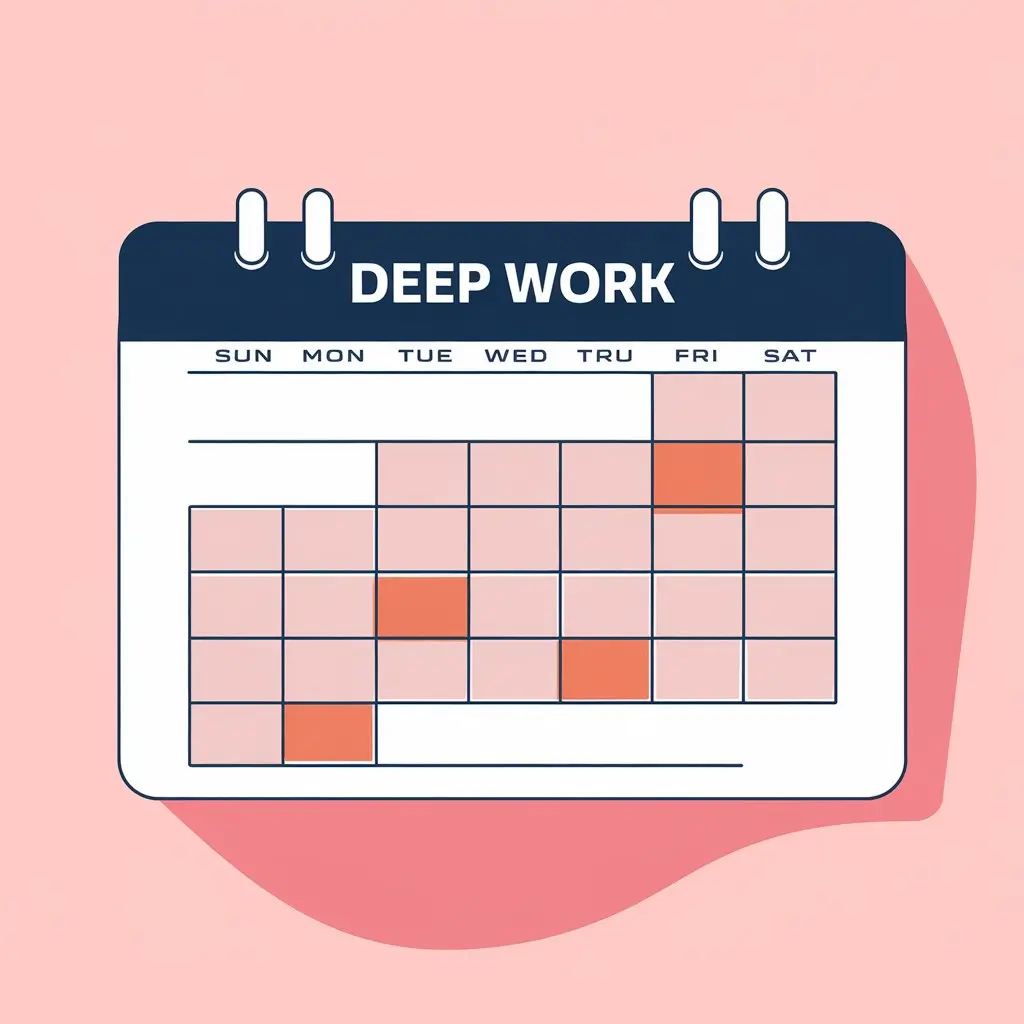Modern life demands a challenge for maintaining both organization and productivity. The flexible system of bullet journaling includes features of planners along with diary functions and to-do list features. Bullet journaling, developed by Ryder Carroll, now serves many people worldwide because it allows users to organize their tasks and objectives successfully. The writing delves into how bullet journaling improves performance while leading people towards achieving their personal goals
The Basics of Bullet Journaling
Bullet journaling is a unique organizational system that combines creativity with practicality. Understanding its foundational elements is crucial for anyone looking to leverage its benefits effectively. Here, we delve deeper into the essential components and the philosophy behind bullet journaling.
History and Origin
Bullet journaling was developed by Ryder Carroll, who sought a method to streamline task management and enhance productivity. Originally, it was designed as a way to help individuals keep track of their lives in a more meaningful and engaging manner. The concept gained traction through social media and online communities, inspiring a global movement of users who share their creative designs and tips.
Core Components
Key:
The key is a crucial element that provides a visual shorthand for the various entries in your journal. All important information is represented by symbols and icons placed sequentially to indicate tasks (•) and events (○) and notes (—). Users can customize their keys to fit their preferences, adding symbols for specific categories or priorities, which helps streamline the logging process.
Index:
The index serves as a table of contents for your bullet journal, helping you quickly locate specific sections or important entries. It’s typically found at the beginning of the journal and is updated regularly as you add new pages. This feature is particularly useful for those who use their journals for multiple purposes, such as tracking projects, personal goals, or daily tasks.
Future Log:
A future log serves as the main area where users plan activities over long periods. Users can document relevant dates and objectives which exceed current monthly limits in this designated space. This section can be structured in various ways, such as a simple list format or a more visual calendar layout, providing a comprehensive overview of what lies ahead.
Monthly Log:
The monthly log is where you plan for the month ahead. It usually includes a calendar view of the month, along with a list of tasks and goals you wish to accomplish. This section helps you set intentions and prioritize what needs to be done, serving as a foundation for your daily entries.
Daily Log:
You should use the daily log to track day-to-day activities with your ongoing tasks, along with significant events and brief notes at the moment they happen. Different users handle their daily log-in in two distinct ways: others follow a straightforward list organization, and various users apply time-blocking systems for task allocation. This flexibility allows for adjustments based on your schedule and needs.
Customization Options
One of the standout features of bullet journaling is its inherent flexibility. Users are encouraged to personalize their journals according to their tastes and requirements. This can include:
- Artistic Elements: Many users incorporate drawings, doodles, or stickers, making the journaling process more enjoyable and visually appealing.
- Color Coding: Utilizing different colors for tasks can provide instant visual cues, helping users prioritize or categorize their entries at a glance.
- Layouts: From minimalist designs to elaborate monthly spreads, the choice of layout can vary greatly. Experimenting with different structures helps users find what works best for them.
- Collections: Beyond the basic logs, users can create themed collections, such as books to read, travel plans, or fitness goals. This adds an additional layer of organization and purpose to the journal.
How Bullet Journaling Boosts Productivity
The practice of bullet journaling provides an effective tool that helps users improve their productivity across different life domains. By providing structure and clarity, bullet journaling helps users focus on their goals, manage their time effectively, and maintain motivation. Here’s a closer look at how this system can significantly boost productivity.
Helps Prioritize Tasks
One of the primary advantages of bullet journaling is its focus on task prioritization. Users can categorize tasks based on urgency and importance, making it easier to determine what needs immediate attention. The use of symbols in the key allows for quick identification of high-priority items. By breaking down larger projects into smaller, actionable tasks, users can tackle each component without feeling overwhelmed, fostering a sense of accomplishment as they check items off their lists.
Facilitates Goal Setting and Tracking
Through bullet journaling people learn to establish realistic objectives that can be accomplished. Users benefit from the SMART criteria which allows them to develop clear goals through specification alongside measures and feasibility and relevance and a selected period of time. Users track their objectives by writing them in the future log and monthly log sections which help them monitor progress throughout the logging period. The tracking system delivers accountability which motivates users by showing them their progress.
Promotes Time Management Strategies
Effective time management is crucial for productivity, and bullet journaling provides various strategies to enhance this skill. Users receive the power to schedule particular time intervals for their tasks which keeps them focused on their work while blocking interruptions. Techniques such as time blocking, where users designate chunks of time for specific activities, can be easily integrated into the daily log. Additionally, by reviewing past logs, users can identify patterns in their productivity, allowing for adjustments to their schedules based on when they are most effective.
Encourages Regular Reflection
Regular reflection is a key component of bullet journaling that significantly enhances productivity. By taking time to review completed tasks and assess what worked and what didn’t, users can gain valuable insights into their habits and workflows. This practice helps in identifying areas for improvement, such as time-wasting activities or ineffective strategies. Users develop self-awareness while maintaining growth-mindset thinking when they reflect on their practice.

Reduces Mental Clutter
The act of writing down tasks, thoughts, and ideas in a bullet journal helps clear mental clutter. When users transfer their responsibilities from their minds to paper, they free up cognitive resources, allowing for better focus on the task at hand. This externalization of thoughts can reduce anxiety about forgetting important tasks, leading to a calmer and more productive mindset.
Enhances Motivation and Accountability
Bullet journaling creates a visual representation of progress, which can be a powerful motivator. Seeing completed tasks and goals can inspire users to continue pushing forward. Furthermore, the act of maintaining a journal fosters a sense of accountability. Users are more likely to follow through on commitments when they have a physical record of their intentions and progress.
Provides a Creative Outlet
While productivity is the primary focus, bullet journaling also offers a creative outlet that can enhance overall well-being. Engaging in artistic elements, such as doodling, designing layouts, or using colors, can serve as a form of stress relief. This balance between productivity and creativity can lead to increased satisfaction and fulfillment in both personal and professional endeavors.
Bullet Journaling Techniques for Success
To truly harness the power of bullet journaling, users can incorporate specific techniques that enhance their efficiency and effectiveness. These strategies not only streamline the journaling process but also align daily activities with long-term goals, paving the way for sustained success. Here are some essential techniques to consider:
Setting SMART Goals
Setting SMART goals is a foundational technique in bullet journaling that guides users in creating clear and actionable objectives. The SMART framework encourages individuals to define goals that are:
- Specific: Clearly outline what you want to achieve. The fitness goal is stated exactly as “exercise for 30 minutes three times weekly.”
- Measurable: Establish criteria to track progress. Reasons for change include monitoring weekly workout counts and tracking weekly running distances.
- Achievable: Your targets need to match your available resources and competence level for successful achievement.
- Relevant: Align your goals with your broader life objectives, ensuring they contribute to your overall vision.
- Time-bound: Deadlines should be established to establish an intense time pressure. The deadlines should be established for weekly, monthly or quarterly durations.
By applying the SMART criteria, users can break down their ambitions into manageable steps, making the journey toward success more structured and achievable.
Utilizing Habit Trackers
Bullet journal application includes habit trackers which serve as essential tools for behavior and routine monitoring. By creating a habit tracker, users can visually represent their progress on specific habits, such as drinking enough water, exercising, or reading. This technique offers several benefits:
- Accountability: Seeing a visual representation of your habits can motivate you to stay consistent.
- Pattern Recognition: Over time, habit trackers reveal trends in behavior, allowing users to identify what works and what doesn’t.
- Positive Reinforcement: Checking off completed habits provides a sense of accomplishment, encouraging users to continue their efforts.
Habit trackers can be customized to fit individual needs, with users choosing different formats, such as grids, bullet points, or colorful charts.
Daily and Weekly Reviews
Incorporating regular reviews into your bullet journaling practice is essential for maintaining focus and accountability. Throughout each week and day organizations have the chance to check their advancement and consider their achievements while making necessary schedule modifications. Here’s how to implement these reviews effectively:
- Daily Reviews: At the end of each day, take a few minutes to review what you accomplished, noting completed tasks and any insights gained. This practice helps reinforce a sense of achievement and prepares you for the next day.
- Weekly Reviews: Set aside time at the end of each week to evaluate your overall progress. Look back at your weekly tasks, assess your goals, and plan for the upcoming week. This broader perspective allows users to adjust priorities and make informed decisions about their schedules.
Incorporating Gratitude and Mindfulness
Integrating gratitude and mindfulness practices into your bullet journal can significantly enhance mental well-being and motivation. Here’s how to do it:
- Gratitude Lists: Dedicate a section of your journal to listing things you are grateful for each day or week. This practice shifts focus from challenges to positive aspects of life, fostering a more optimistic outlook.
- Mindfulness Reflections: Include prompts for mindfulness reflections, such as “What did I learn today?” or “What challenges did I overcome?” Such mental exercises foster personal introspection while developing an attitude that prioritizes development.
By cultivating gratitude and mindfulness, users can create a more balanced and fulfilling journaling experience.
Themed Collections
Themed collections are a creative way to enhance bullet journaling by organizing information around specific topics or interests. These collections can vary widely, from tracking books to read, travel plans, or personal development goals. Here are some ideas for themed collections:
- Books to Read: Create a list of books you want to read, along with notes on each book or a rating system.
- Travel Plans: Write down the destinations along with their planned itineraries and future experiences.
- Personal Projects: Track progress on hobbies or side projects, breaking them down into actionable steps.
Overcoming Common Challenges
Users who practice bullet journaling gain many advantages yet they might meet obstacles which reduce their productivity or enjoyment of the system. You need to understand and overcome various obstacles when using your bullet journal for best results. Users typically face these three main obstacles with bullet journaling yet these approaches help them overcome them:
Avoiding Perfectionism
Many individuals feel a strong urge to create a “perfect” bullet journal, which can lead to frustration and anxiety. This pressure often stems from the highly curated and aesthetically pleasing examples seen on social media. Here’s how to combat perfectionism:
- Embrace Imperfection: Remind yourself that the primary purpose of a bullet journal is to serve your needs, not to be a work of art. Accept that mistakes and imperfections are part of the process.
- Focus on Functionality: Prioritize functionality over aesthetics. A bullet journal is a tool for organization and reflection, and its effectiveness should take precedence over its appearance.
- Practice Self-Compassion: Be kind to yourself. If a layout doesn’t turn out as expected, recognize that it’s okay and part of the learning process.
Staying Consistent
Consistency is key to reaping the full benefits of bullet journaling, but many users struggle to maintain a regular practice. Here are some strategies to foster consistency:
- Set a Routine: Designate specific times for journaling, such as in the morning or before bed. Building a routine makes it easier to integrate journaling into your daily life.
- Start Small: If you’re new to bullet journaling, begin with just a few entries each day or week. Gradually increase your commitment as you become more comfortable with the practice.
- Use Reminders: Setting reminders on your phone or using sticky notes can help prompt you to journal regularly. Visual cues can serve as helpful nudges until journaling becomes a habit.
Managing Time Spent on Journaling
Balancing journaling with daily responsibilities can be challenging, especially for those with busy schedules. To manage time effectively, consider the following tips:
- Limit Your Time: Set a timer for your journaling sessions. This prevents you from spending excessive time on layouts or decorations, allowing you to focus on essential entries.
- Prioritize Key Sections: Determine which sections of your journal are most important to you and focus on those. You don’t have to fill every page to make your bullet journal effective.
- Combine Activities: If you have limited time, consider integrating journaling into other activities, such as reflecting on your day while commuting or unwinding before bed.
Dealing with Creative Blocks
Creative blocks can prevent users from enjoying the process of bullet journaling. Here are strategies to overcome these blocks:
- Use Prompts: Incorporate journaling prompts to spark inspiration. These could be questions about your goals, reflections on your day, or creative challenges.
- Explore New Layouts: Try experimenting with different layouts or formats. Changing your approach can reignite your enthusiasm and creativity.
- Take Breaks: If you feel stuck, take a short break from journaling. Sometimes, stepping away can provide the mental clarity needed to return with fresh ideas.
Balancing Multiple Functions
As bullet journals can serve various purposes, task management, habit tracking, creative expression, users may struggle with balancing these functions. To create a harmonious system:
- Define Your Priorities: Clarify what you want to achieve with your bullet journal. Establishing clear priorities helps you streamline your entries and focus on what matters most.
- Create Separate Sections: Designate specific sections for different functions, such as a dedicated space for tasks, another for reflections, and one for creative ideas. This organization helps maintain clarity and prevents overwhelm.
- Review and Adjust: Regularly review your journal to assess what’s working and what isn’t. Adjust your layout and priorities as needed to ensure your journal remains aligned with your goals.

Finding Inspiration
Users may occasionally struggle to find inspiration for layouts, entries, or creative elements. Here are some ways to seek inspiration:
- Explore Online Communities: Join bullet journaling groups on social media platforms like Instagram, Pinterest, or Reddit. These communities offer a wealth of ideas, layouts, and tips from fellow enthusiasts.
- Follow Influencers and Bloggers: Many bullet journal enthusiasts share their experiences and designs through blogs and YouTube channels. Following these creators can provide fresh ideas and motivation.
- Reflect on Personal Interests: Draw inspiration from your hobbies, interests, and experiences. Incorporating elements that resonate with you will make the journaling process more enjoyable and authentic.
Creating a Sustainable System
As life changes, so too will your needs and priorities. To create a sustainable bullet journaling system:
- Be Flexible: Your bullet journal should evolve with you. If a particular layout or technique isn’t serving you anymore, don’t hesitate to change it.
- Regularly Assess Your Goals: Take time to evaluate your short-term and long-term goals. Adjust your journaling approach to align with your current objectives.
- Celebrate Progress: You should appreciate your successes regardless of their magnitude. Celebrating progress boosts motivation and reinforces the value of your journaling practice.
Getting Started with Bullet Journaling
The beginning of a bullet journaling adventure brings both thrilling prospects and initial overwhelming feelings for anyone new to this concept. To develop an effective bullet journal that boosts productivity along with personal advancement, you need adequate tools in addition to appropriate methods and a mental approach. This complete guide provides you the required direction to start as a beginner.
Recommended Materials
The first step in bullet journaling is gathering the necessary materials. People can technically use any notebook along with a basic pen but specific alternatives will improve their process.
- Notebook:
- Dotted or Grid Notebook: Many bullet journal enthusiasts prefer dotted or grid notebooks, as they provide structure while allowing for flexibility in layout design. Popular options include the Leuchtturm1917, Moleskine, and Rhodia.
- Plain Notebook: If you prefer complete freedom in design, a plain notebook can work just as well.
- Pens and Markers:
- Choose pens that are comfortable to write with and dry quickly to avoid smudging. Many users opt for fine-tipped pens or gel pens for clean lines.
- Using colored pens or markers as highlighters for tasks creates both visual appeal and helps with color-coding the entries in your planner.
- Ruler:
- A ruler can help create straight lines and neat layouts, especially for those who prefer a more structured appearance.
- Stickers and Washi Tape:
- Decorative elements like stickers and washi tape can add a personal touch to your journal. January (page 8) allows users to mark pages with task notes and valuable events and design enhancements.
Tips for Beginners
The initiation of a bullet journal may seem daunting yet following some fundamental suggestions will help make the process smoother.
- Start Simple:
- Begin with system configuration using the four fundamental elements including the index together with future log and monthly log and daily log. You can gradually add new features as you become more comfortable with the system.
- Develop a Routine:
- Establish a time for journaling each day or week. Building the habit depends on consistency which creates easier adaptation to your daily routine.
- Experiment and Adapt:
- Every artist should feel free to experiment with diverse layouts as well as various symbols and artistic methods. The beauty of bullet journaling lies in its flexibility, so adapt it to fit your preferences and needs.
- Be Patient:
- Allow yourself time to adjust to the process. It may take a few weeks to find your rhythm and determine what works best for you.
Resources for Inspiration
Getting inspiration helps you maintain an engaging and motivating bullet journal. Here are some resources to explore:
- Books:
- “The Bullet Journal Method” by Ryder Carroll: This book provides in-depth insights into the philosophy and practice of bullet journaling from its creator.
- “Dot Journaling, A Practical Guide” by Rachel Wilkerson Miller: This guide offers creative ideas and layouts for beginners.
- Online Communities:
- Join online platform members from Instagram, combined with Pinterest members and Reddit participants, should connect with bullet journal enthusiasts. Search for hashtags like #bulletjournal or #bujo to discover a vast array of ideas and inspiration.
- YouTube Channels:
- Many content creators share their bullet journaling processes through tutorials and flip-throughs. Watching these videos can provide practical tips and visual inspiration for your own journal.
- Blogs and Websites:
- Explore blogs dedicated to bullet journaling for tips, tutorials, and layouts. You can find plenty of free printables which bloggers make available for customers to use in their journals.
Creating Your First Setup
Once you have your materials and inspiration, it’s time to create your first bullet journal setup. Here’s a simple step-by-step guide:
- Create an Index:
- Leave the first few pages for your index. This will help you keep track of the contents of your journal and quickly locate important sections.
- Set Up Your Future Log:
- Reserve a few pages for your future log, where you can jot down upcoming events, deadlines, or goals for the next few months.
- Design Your Monthly Log:
- Create a monthly log for the current month. Include a calendar view and a list of tasks or goals you want to accomplish.
- Establish Your Daily Log:
- Start your daily log by writing the date at the top of the page. Below, list your tasks, events, and notes for the day.
- Add Personal Touches:
- As you become more comfortable, consider adding decorative elements, such as doodles, quotes, or color coding to enhance your journal’s visual appeal.
Maintaining Your Journal
Once you’ve set up your bullet journal, maintaining it is key to reaping its benefits:
- Regular Updates:
- Writers should establish a pattern of journal entry either daily or on a weekly basis. Regular entries keep your tasks organized and allow for timely reflections.
- Review and Reflect:
- Set aside time each week to review your progress and reflect on what worked well and what needs improvement. This practice helps you stay accountable and adjust your strategies as needed.
- Celebrate Achievements:
- Acknowledge your accomplishments, no matter how small. Celebrating progress reinforces motivation and encourages you to continue using your bullet journal.
Conclusion
People should consider bullet journaling since it serves beyond being a current fashion trend because it functions as a strong resource that boosts productivity and leads to personal success. The flexible yet organized structure of bullet journaling enables people to gain control over their life activities. Bullet journaling serves as a valuable instrument which helps students and professionals and people striving for self-improvement reach their maximum level of achievement.
























